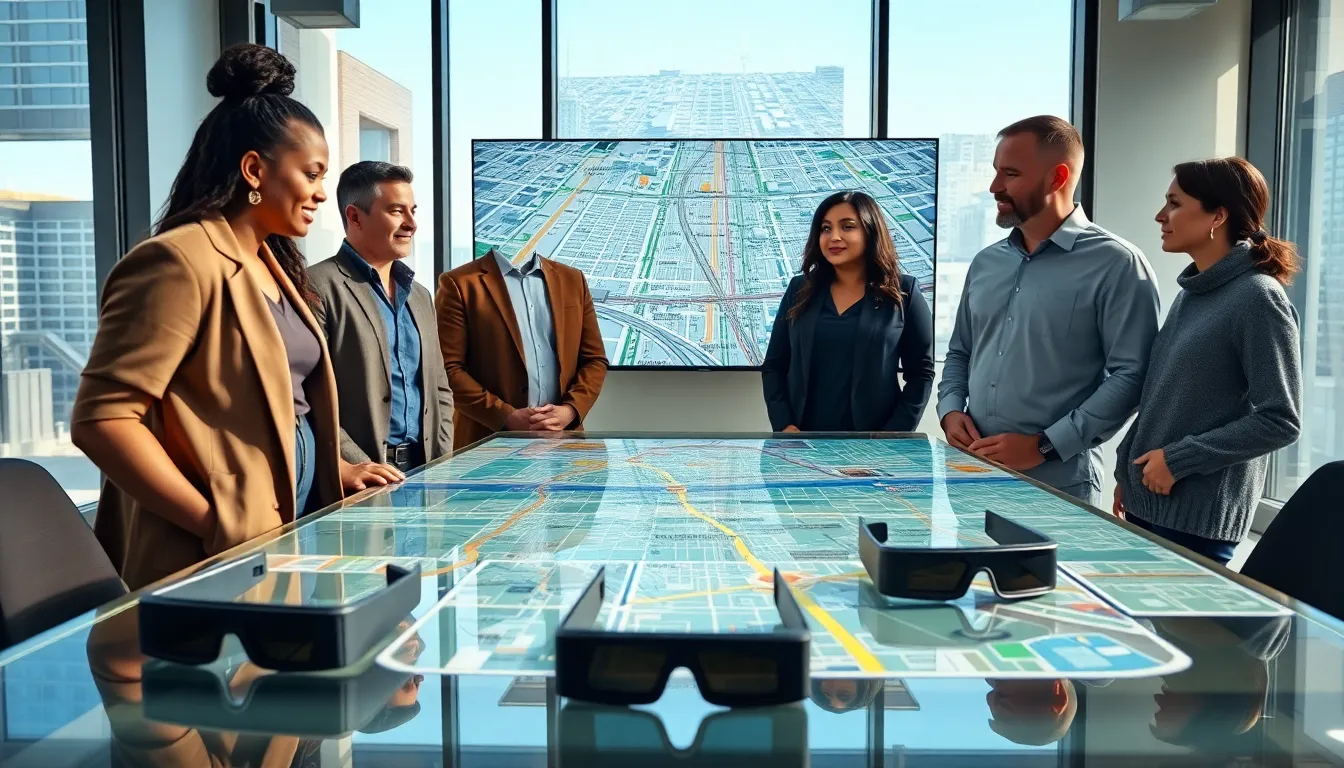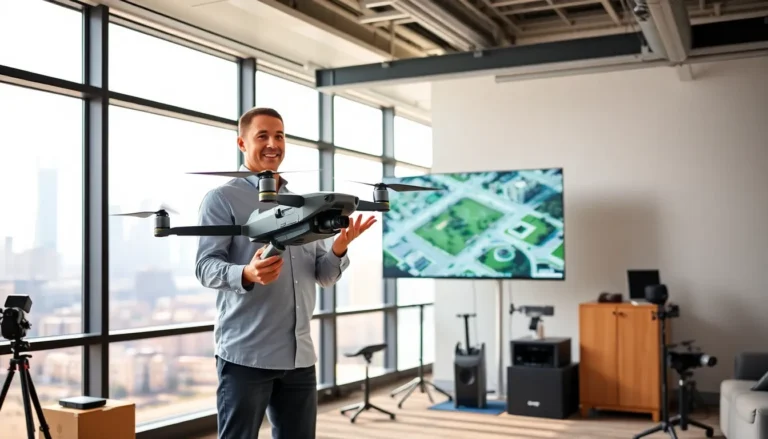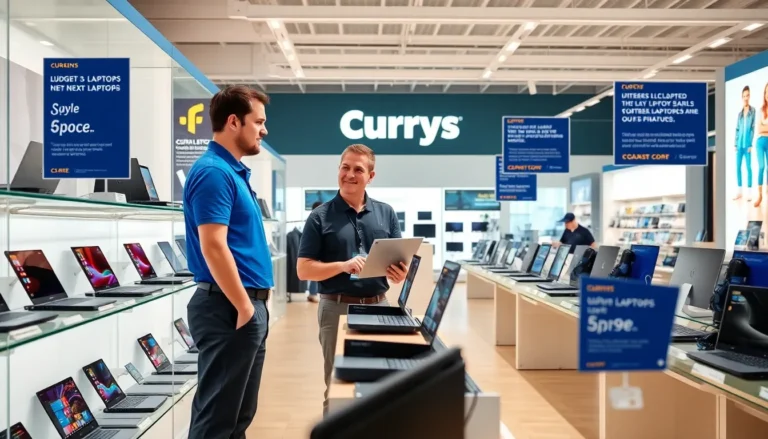Imagine walking through a busy city, your phone lighting the way, pointing out restaurants and landmarks like a personal tour guide. Augmented reality navigation is doing just that, blending the real world with digital information in a way that might have seemed like science fiction a few years ago. Forget searching for those pesky street signs or squinting at a map: this technology is here to make navigation intuitive, engaging, and even a bit fun. Let’s jump into this exciting world of augmented reality navigation and explore how it transforms our journey.
Table of Contents
ToggleWhat Is Augmented Reality Navigation?

At its core, augmented reality (AR) navigation enhances the real world with digital information. It overlays graphics, text, and virtual objects onto a live view of the physical world, typically accessed through smartphones or AR glasses. This technology uses sensors and cameras to understand the surroundings, allowing users to receive directions, information, and even entertainment all in real time.
Augmented reality navigation isn’t just for whimsical exploration. It’s powerful, practical, and immensely useful for daily commutes, urban adventures, and even outdoor hikes. In a nutshell, AR navigation equips users with a modern tool that blends technology and reality, making it easier to traverse and explore the world around them.
How Augmented Reality Navigation Works
By utilizing the capabilities of various devices, the navigation experience can become personalized, informative, and engaging. In essence, the technology transforms mundane directions into an exploration filled with visual cues and interactive elements.
Benefits of Augmented Reality Navigation
Augmented reality navigation offers numerous benefits, making it an attractive choice for both casual users and professionals. Here are some standout advantages:
- Enhanced User Experience: The combination of real-world visuals with informational overlays creates a richer environment for users. Someone trying to find a restaurant will not only see the name pop up on their screen but will also enjoy a view of the establishment using their camera.
- Greater Accuracy: Unlike traditional maps, AR navigation can provide real-time adjustments, helping users avoid construction or street closures. It allows for instantaneous updates that make navigating a dynamic urban environment much simpler.
- Multifunctionality: Beyond just providing directions, augmented reality can offer additional context. Users can learn about historical sites, reviews of nearby cafes, or even guided tours, all while on the go.
- Accessibility of Information: For those who may find navigation challenging, AR provides intuitive visuals that make following directions less daunting. Instead of reading complex maps, users can simply follow arrows overlaid on their path.
- Interactive Environment: Engaging with surroundings through AR makes the experience not only functional but also enjoyable. Users can discover new places, receive recommendations, and enjoy a sprinkle of gamified experience as they navigate.
Applications of Augmented Reality Navigation
The applications of augmented reality navigation extend across various sectors, enriching user experience and functionality in countless ways. Here are some key areas where AR navigation shines:
- Urban Navigation: Cities like London and New York have adopted AR for enhancing public transport systems. Users can find directions to nearby transit stations and receive alerts about upcoming train arrivals.
- Tourism: Travel companies have embraced AR to attract tourists. Imagine walking through Rome, having ancient ruins come to life with informative overlays detailing their history and significance. This immersive experience adds depth to sightseeing adventures.
- Retail and Events: Stores use AR to guide customers to products in complex warehouses. At events, AR can provide maps and highlight key sessions, ensuring attendees never miss a beat.
- Outdoor Activities: Hiking and climbing apps leverage AR to enhance safety and enjoyment. Users can overlay maps of trails and identify points of interest, all while basking in nature’s beauty.
- Gaming and Entertainment: While it might sound unconventional, AR navigation has found its way into the gaming world. Games like Pokémon GO use augmented reality to create engaging exploration experiences that encourage players to move through their environments.
Challenges and Limitations
Even though its many perks, augmented reality navigation is not without its challenges. Here are a few limitations to consider:
- Device Dependency: AR navigation generally requires advanced smartphones or specialized hardware, limiting usability for some users. Not everyone has access to the latest technology, which could widen the digital divide.
- Environmental Factors: AR relies heavily on environmental conditions: poor lighting or adverse weather can hinder the effectiveness of camera-assisted navigation.
- Battery Consumption: Running AR applications can quickly drain smartphone batteries, which can be a significant drawback for long journeys.
- Privacy Concerns: As AR apps collect user data for optimization, there are questions about privacy and data security. Users must be aware of how their information is utilized.
- User Distraction: With so much information combined into the navigation interface, users might face distractions that hinder their focus on the real world. Balancing information presentation is crucial to maintain safety.
The Future of Augmented Reality Navigation
Looking ahead, the future of augmented reality navigation is bright and filled with potential. We can expect several advancements, including:
- Integration with Smart Cities: As cities become smarter, the integration of AR navigation with IoT devices will enhance user experiences even further, allowing citizens to receive up-to-date information about their environments.
- More Personalization: Improved machine learning algorithms will provide tailored experiences based on user habits and preferences, making navigation feel even more intuitive.
- Wider Adoption in Various Domains: From healthcare to transportation, industries are likely to leverage AR navigation for improved outcomes, making it a staple across sectors.
- Advances in Hardware: As technology progresses, we can look forward to lightweight, affordable AR glasses that make navigation hands-free and more immersive.
- Focus on Sustainability: As the world turns its attention to sustainability, AR navigation can guide users towards eco-friendly options, such as walking paths or public transport, promoting greener choices.





